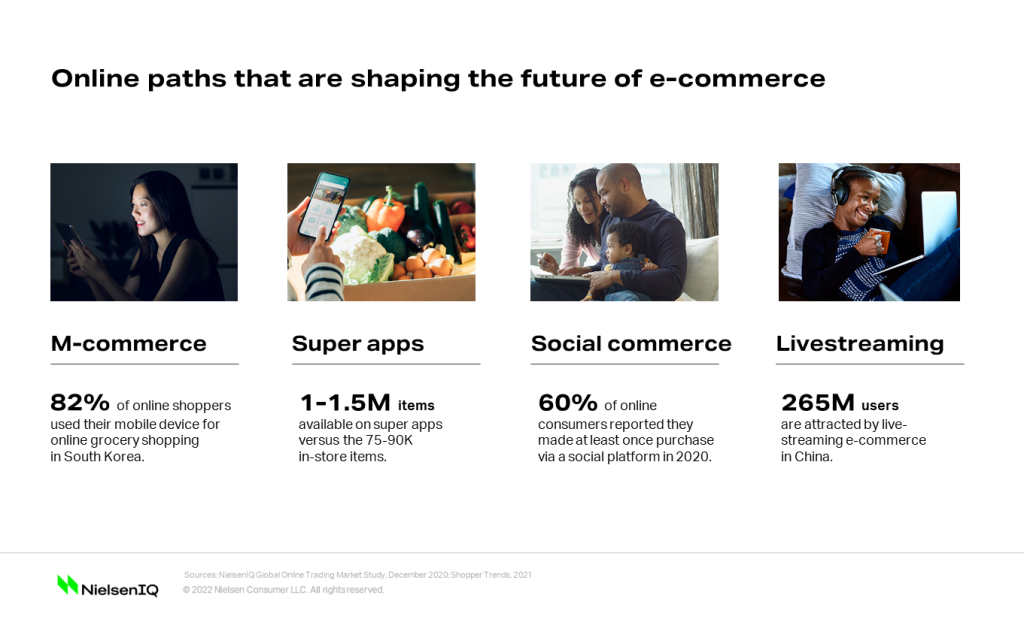Mobile drives shopping traffic
Mobile users are indisputably boosting e-commerce traffic and shaping the path of the e-commerce evolution. Mobile-first shoppers are driving m-commerce and gaining ground across Asia. In South Korea, for example, 82% of online shoppers used their mobile device for online grocery shopping. M-commerce is also a major way to buy online in Brazil, with number of orders placed at 56.3 million in H1 2021.
Mobile applications fuel digital commerce. So-called super apps began to soar in Southeast Asia as they offer consumers a one-stop shop, integrating all aspects of consumers’ virtual lives with multiple services such as social networking, food delivery, restaurant booking, payments, and gaming. Today, e-commerce super apps can have around 1-1.5 million items versus the 75-90K in-store items. Due to the one easy user experience, super-apps offer a solution for the challenges of now: to navigate consumers and keep them engaged.

The power of social commerce and livestreaming
As another fresh form of engagement, social commerce is conquering the world. Purchases through social networks are on the rise, with 60% of online consumers reporting they made at least one purchase via a social platform in 2020.
Social commerce includes not only the shopping transactions consumers make through social networks, but the many new ways companies combine value-based online shopping with social entertainment. Developed e-markets like China are leveraging social commerce to extend shopper engagement by relying on community power.
Livestreaming e-commerce is also experiencing explosive growth in China, attracting 265 million users now, accounting for almost 50% of livestreaming users. E-players attempt to influence consumers with tools like crowd-sourced group deals, direct-to-consumer offerings, and social media bartering to foster brand relationships.
Grabbing the attention of online shoppers and keeping them engaged and loyal is possible, although it might require some creativity. Taking advantage of social networks and entertainment tools will attract new shoppers when building beneficial relationships with existing consumers. Moreover, the community has the power to encourage members for purchases.
Keeping up to date with all the latest trends and initiatives and building these insights into the decision-making process are essential for a winning e-commerce strategy that helps marketers to be on top of the online game.

Power your e-commerce strategy
Get in touch with us for accurate data and actionable insights.




